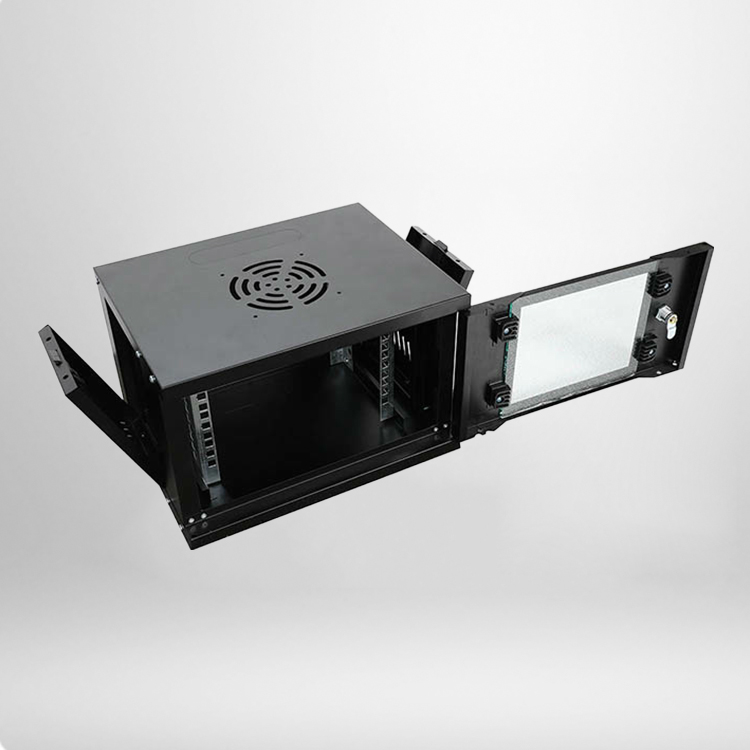
In the digital age, where connectivity is the backbone of daily operations, keeping network equipment organized is essential. A wall mounted network rack emerges as a smart solution for managing routers, switches, modems, and other networking devices. This compact and functional accessory offers a range of benefits that cater to both home users and small – to medium – sized businesses.
One of the primary advantages of a wall mounted network rack is its space – saving design. Unlike floor – standing racks that occupy valuable floor space, these racks are installed directly on the wall, freeing up room for other furniture or equipment. This is particularly useful in small offices, home offices, or utility rooms where space is limited. By lifting network devices off the floor, it also helps to reduce clutter, creating a cleaner and more professional – looking environment. Whether you have a compact home setup or a busy office, this space – efficient solution can transform a chaotic corner into an organized hub.
Organization is at the core of what a wall mounted network rack provides. With designated slots and mounting points, it allows you to arrange all your network components in a systematic manner. Cables can be neatly routed through built – in cable management features, such as clips or channels, preventing tangles and making it easy to identify and access specific connections when needed. This not only simplifies maintenance and troubleshooting but also reduces the risk of accidental disconnections that can disrupt network performance.
Protection of equipment is another key benefit. A wall mounted network rack typically comes with a door or cover that shields devices from dust, dirt, and accidental bumps. Dust accumulation can clog vents and cause overheating, which can lead to equipment failure over time. By enclosing the devices, the rack helps to maintain a clean environment, extending the lifespan of your networking gear and reducing the need for frequent repairs or replacements. Additionally, the sturdy construction of most racks provides physical stability, preventing devices from being knocked over or damaged.
Versatility is a standout feature of wall mounted network racks. They come in various sizes, ranging from small 2U models (where 1U equals 1.75 inches) suitable for a few devices to larger 12U racks that can accommodate more complex setups. This means you can choose a rack that fits your specific needs, whether you’re managing a simple home network with a router and modem or a small business setup with multiple switches and a patch panel. Most racks are also compatible with standard equipment sizes, making them easy to integrate into existing networks.
Installation of a wall mounted network rack is straightforward, even for those with basic DIY skills. Most racks come with all the necessary mounting hardware, including screws and anchors, and clear instructions guide you through the process. It’s important to ensure the rack is installed on a sturdy wall surface, such as a stud, to support the weight of the equipment. Once mounted, securing devices in place is a simple task using the included brackets or screws, allowing you to set up your network in no time.
For businesses, a wall mounted network rack can enhance security. Many models feature lockable doors, which restrict access to sensitive equipment and prevent unauthorized tampering. This is crucial in environments where network integrity is vital, such as offices handling confidential data or retail stores with point – of – sale systems. The added security gives peace of mind, knowing that your network infrastructure is protected from both physical and digital threats.
In home settings, a wall mounted network rack can be a game – changer for tech enthusiasts or families with multiple devices. It keeps all networking gear in one central location, making it easy to manage and upgrade. Whether you’re adding a new router, expanding your Wi – Fi coverage, or troubleshooting a connection issue, having everything organized in a rack saves time and reduces frustration.


